Schnauzers: description of breeds, types and nuances of content
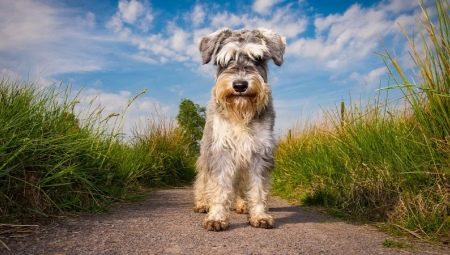
There are many versatile dog breeds that are capable of becoming a loyal companion to humans, as well as performing many important functions. Among the available list, it is worth highlighting the German schnauzer, which today is represented by three interesting and popular subspecies.
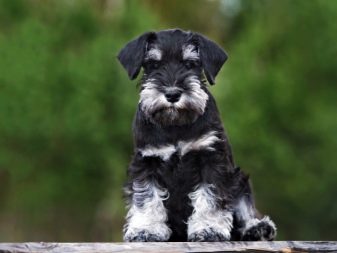
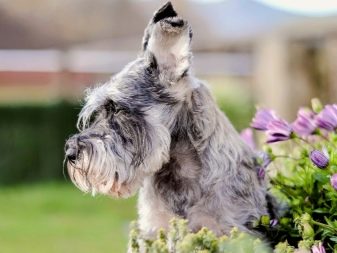
Origin
Germany is considered to be the homeland of schnauzers. The first mentions of animals with such an exterior date back to the 18th century. Such dogs were previously used by farmers to protect their farms from the invasion of moles and rats. It is believed that the ancestors of modern four-legged pets of this breed were the Pinschers. However, in the process of interacting with humans, it became clear that schnauzers are not only excellent rat-catchers, but can also perform other useful functions, which served as the impetus for the selection of dogs.
Schnauzer is translated from German as "muzzle", one glance at the dog will be enough to understand why it was called that. After humans began to engage in animal breeding, large dogs were bred, which could be used to transport luggage of medium size and weight, as well as small dogs that act as a faithful companion for humans.
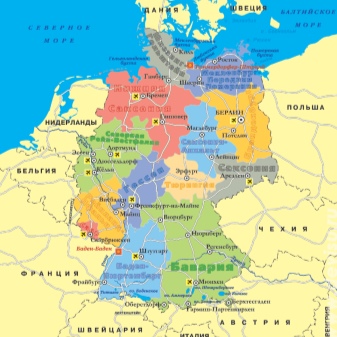
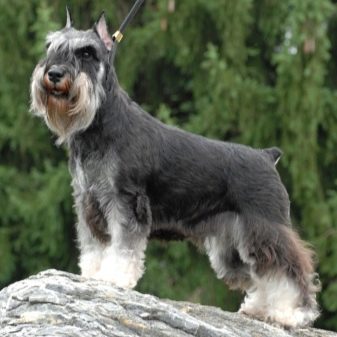
Description
Despite the fact that today there are three types of schnauzers, they have characteristics common to all. This primarily concerns the muzzle. It will be rectangular, elongated, with a clearly visible transition from the frontal part, while the nose in dogs also remains rectangular. The eyes and lips of animals should be dark. Two types of ears are allowed:
- cropped;
- ordinary.
The first option will provide a standing position for the auricles, when, at their natural size, they will be half hanging. The body of schnauzers resembles a square, while the limbs are strong, not distinguished by their size. The tail is docked.
The coat is rather rough, without a haircut it will be long and straight. However, dogs are usually trimmed and trimmed to achieve a well-groomed appearance, since animals do not naturally shed.
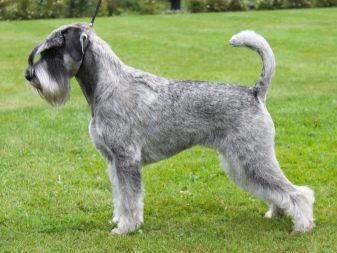
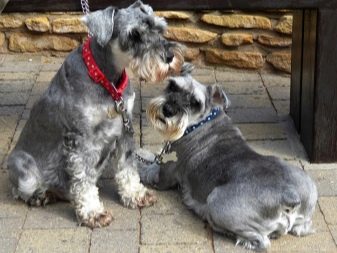
Usually, the hair on the head and neck is shortened, and the hair on the thighs is also subject to shearing. With the help of various tools, dogs are made expressive beards, mustaches, eyebrows. Soft coat is considered a deviation from the established characteristics of the breed.
The standard coat color for animals will be black and white, and dogs are also available in salt and pepper colors. For schnauzers, it is considered acceptable to have a mask, however, the presence of light spots will be considered a rejection. According to the standards established in 1979, the height and weight of four-legged pets of this breed should be as follows:
- at the withers, giant schnauzers will be from 60 to 70 centimeters with a body weight of 35 to 47 kilograms;
- the average species grows to 45-50 centimeters, with a weight ranging from 14-20 kilograms;
- dwarf dogs should be at the withers at the 35-centimeter mark, with an adult weighing about 4-8 kilograms.
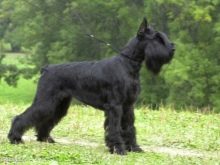
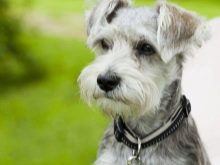
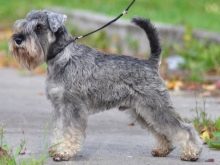
Animals of this breed stand out for their good health, they rarely suffer from colds. It is these pets that are considered centenarians. However, they may have such genetic abnormalities as hind leg dysplasia, diseases of the visual organs, diabetes, oncology, and gastric volvulus.
Dogs are characterized by high intellectual abilities, curiosity and activity. Schnauzers have a balanced psyche, they remain faithful to their breeder in any situation. An outsider is unlikely to be able to lure the schnauzer to his side, even with the help of a treat. The breed is considered suitable for guarding functions.
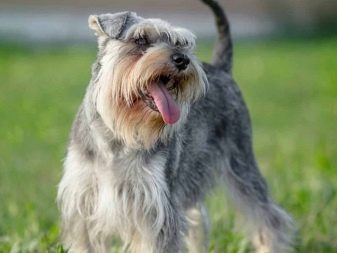
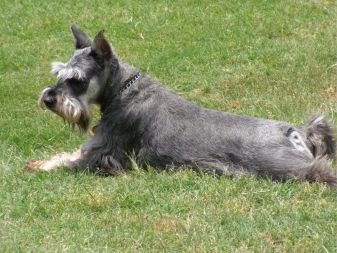
Advantages and disadvantages
A dog of this breed has strengths and weaknesses that need to be studied by a potential breeder. The advantages of schnauzers include:
- developed intelligence, in the light of which animals stand out for their excellent learning ability;
- the dog gets along well with children;
- the breed is considered universal, so the dog can be used as a companion and watchman;
- animals rarely get sick and live long.
The environment of characteristics that can be attributed to the weaknesses of the breed are noted:
- the need for constant special care for the pet's coat;
- organization of regular active pastime for the pet.
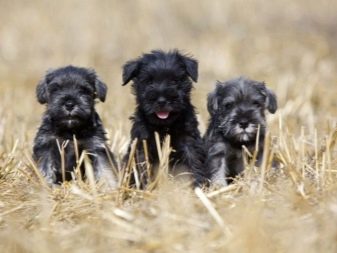
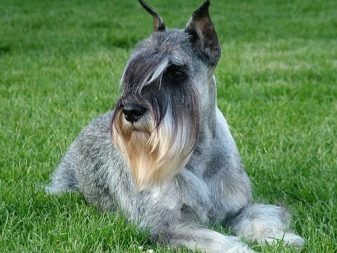
Varieties
Based on the features of the exterior, the schnauzers are divided into subspecies.
Miniature schnauzer
These are small-sized pets with a typical breed-shaped muzzle. In animals, the transition from the forehead is pronounced, bushy eyebrows are present. No hump, parallel to the forehead. The lips are tightly closed, painted in a dark color. Dog bite is scissor bite, oval eyes are of medium size. The ears are set high, the upper part is twisted towards the muzzle, partial cropping is allowed. The second popular name for animals with a similar exterior is the Cocker Micro Schnauzer.
The body of miniature schnauzers is similar to a square, the back is small with developed muscles. The croup is rounded, sloping gently towards the tail. The chest is wide, the line of the abdomen is tucked up. Legs are straight, paws are small in size with closed toes, black pads and claws. The tail is set high, as well as the ears are sometimes docked. Some puppies of this subspecies of the breed are born with a small tail, which does not make sense to shorten.
The Miniature Schnauzer is perfect for keeping at home.

Mittel schnauzer
The dog grows larger in size than the previous subspecies, has a well-developed muscular corset, a small but elongated head, characteristic of all schnauzers. In front of the muzzle from the forehead it is presented in the form of a wedge, the dog has a mustache, thick eyebrows and a beard. Scissor bite, oval eyes with dark color.
The build is square, the chest is wide, the back is slightly sloping. The paws are not distinguished by their size, but they are developed correctly. The tail is set high, docking is allowed, but by standards it should be long.
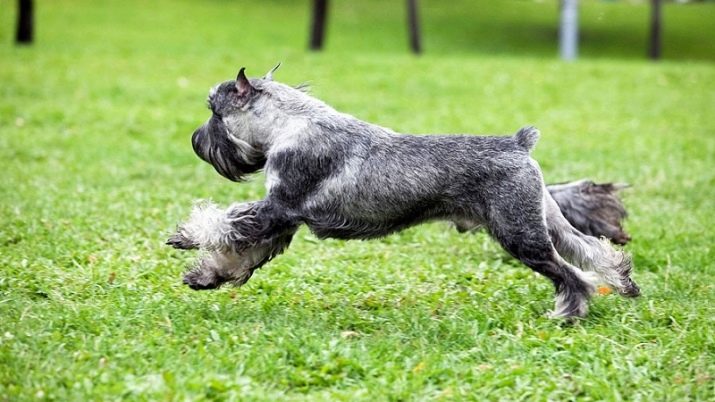
Giant schnauzer
Dogs have a rather massive skull and wedge-shaped muzzle with a beard and eyebrows. Also, the jaws of the animal stand out with their strength, the eyes repeat the shape of an oval, they are located quite close to the bridge of the nose. Hanging ears, placed symmetrically, have a triangular shape. The back in dogs of this subspecies is short, the line of the abdomen is tucked up, the chest is large, protruding forward. The legs are straight and long, the hind legs are usually slightly shorter than the front ones, spaced with a slight slope.
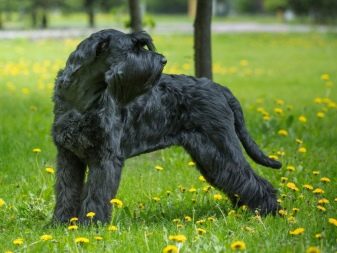
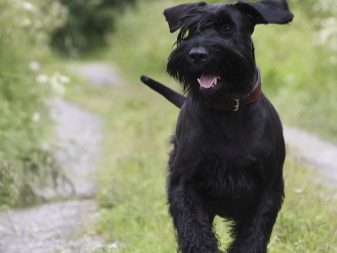
Maintenance and care
When purchasing a schnauzer puppy, you need to be prepared for the fact that the animal will need regular physical activity, therefore, when keeping a dog, it is necessary to provide it with daily long walks. The pastime should be shared. In addition to the usual hikes on a leash, the pet should be occupied with various games so that it can warm up properly. This moment is extremely important for the dogs that live in the apartment.
In addition to physical activity, keeping schnauzers implies constant grooming of the coat. It comes down to everyday brushing with a metal brush. It is recommended to comb the animal in the direction of hair growth.
The undercoat should also be combed, otherwise mats will form in it.
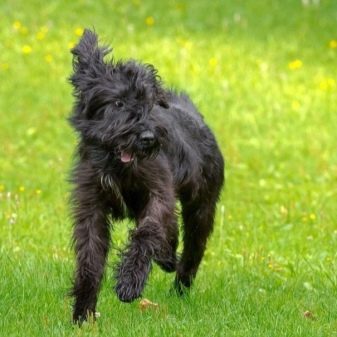
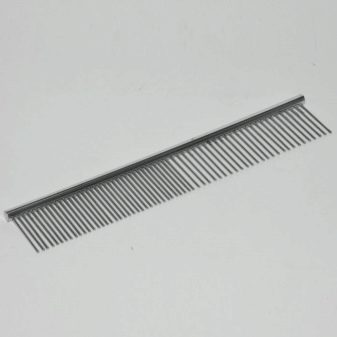
Trimming is carried out every six months, the head and hips of the dog are treated with a typewriter, otherwise you can wield scissors. As the schnauzers grow, it is necessary to shorten the hair in the area of the eyes and mouth, the beard can simply be washed, leaving the length unchanged. These procedures are best trusted by professionals, otherwise the dog will look extremely unkempt.
The attention of the breeder will require the eyes and mouth of the dog. An animal is recommended to brush its teeth using a special brush and paste. You can replace store-bought ingredients with baking soda. The eyes are wiped with a damp cotton pad to prevent possible inflammation of the organs of vision; all discharge in the corners of the eyes must be promptly removed. As it grows, the schnauzer needs to trim its nails; it is best to teach the dog to this procedure from childhood. It is recommended to start from the hind limbs, removing only the non-living extreme part of the nail.
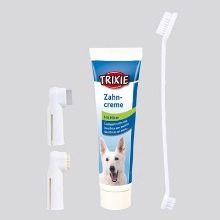
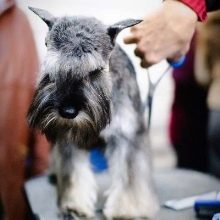
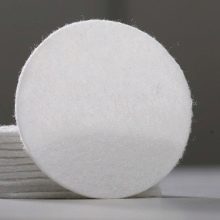
Feeding
The diet of dogs of this breed requires the breeder to comply with some nuances. Since most often the animal enters the house as a puppy, it should properly equip the place for eating. Pet food bowls should be placed on a stand that can be adjusted to the height of the dog. It is necessary to arrange water nearby. Do not leave a half-eaten portion until your next meal. Any food for a schnauzer is preheated to room temperature. The optimal feeding time will be an hour before the planned walk or half an hour after coming home.
The animal's diet should be composed of ¼ plant foods and ¾ animal ingredients. It is worth highlighting the recommended foods that should be present in the diet of a schnauzer:
- meat and offal;
- seafood;
- fermented milk products;
- porridge;
- crackers or rye flour;
- eggs;
- vegetables;
- greens;
- fruits.
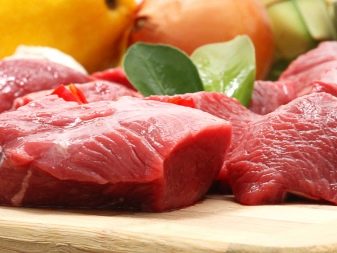
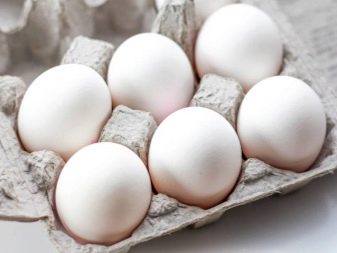
If a dog begs for food from a human table, such attempts must be suppressed in a harsh manner. Salting, smoking, fried foods are prohibited.The breed does not know a sense of proportion, so the amount of food eaten must be strictly controlled so as not to provoke problems with the gastrointestinal tract and obesity.
Schnauzers can be fed with dry industrial feed or natural food. The daily rate is regulated depending on the age of the four-legged pet.
So, from 2 to 4 months, 200 grams of food will be enough for the animal, by half a year the volume increases 2 times.
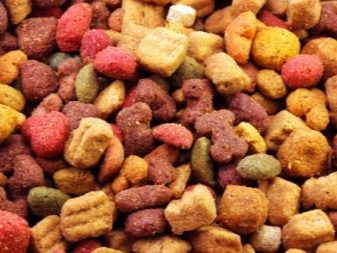
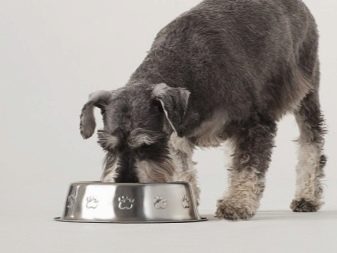
Cynologists and experienced breeders of this breed of dogs recommend adhering to these rules when drawing up the menu.
- The first morning meal is more correct to make liquid. This will have a positive effect on digestion.
- Meat should be alternated with dairy and fermented milk products. It is best to give it raw, avoiding fatty foods. In summer, meat products and offal are additionally doused with boiling water to exclude infection with worms.
- One meal should contain more vegetables. They are offered to their dog in a pure and raw form, for good assimilation of root crops they are crushed, an additional teaspoon of vegetable oil is added. In addition, fresh greens are important for the pet in the diet, they are crushed and added to any dish. Some breeds are prohibited from eating tomatoes, but with schnauzers the situation is the opposite - they can be given tomatoes, but after peeling them off.
- From 4 months it is necessary to temporarily remove solid ingredients from the dog's menu until the teeth change.
- It is best to pre-boil the fish, remove small bones. The preferred options for the schnauzer will be sea varieties, pollock is prohibited.
- Among dairy and sour milk products, the priority will be cottage cheese, fermented baked milk or kefir, hard cheese varieties. These foods are important for the dog throughout its life because it is an irreplaceable source of calcium, which is important for bones and teeth.


If it is easier for the breeder to feed the pet with industrial feed, then the puppy's acquaintance with such products should be gradual. Feeding with dry food, as well as a variety of pates and jellies is allowed. They select options for store feeds based on the subspecies and size of the schnauzer; premium products are a priority. If the animal has any allergic reactions or diseases, the selection of the optimal feed should be carried out in conjunction with the veterinarian.
When organizing food, one should not forget about the constant access of the dog to clean drinking water, especially when feeding with dry industrial feed.


Training and education
In the process of training and educating a growing schnauzer, the breeder is recommended to build all classes in a playful way. It will be possible to teach some basic commands to the dog simply by playing the ball with it. The animal has not lost its hunting instincts, therefore it is important for the pet to develop and maintain its search for objects using its sense of smell. It is allowed to use food rewards in the learning game.
Cynologists recommend starting classes with a pet at 2-2.5 months. It should be noted that the breed is easily trained in various circus tricks. In addition to rewards for a correctly executed command, the owner needs to establish clear boundaries of leadership in order to point out the pet's error in behavior when disobedient. It is not recommended to practice physical strength and shouting during training. Any raising of the voice will be enough for the dog. You should not use the method of teaching teams using mechanical memorization, such options with a schnauzer will not bring positive results.
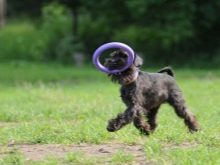
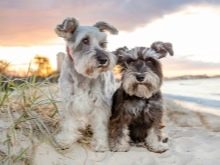

Teaching a dog from early childhood to perform guard functions, in the future you can get a good personal guard and watchman for your home.
By resorting to additional courses with a cynologist, a first-class rescuer can be raised from a dog, the animals follow the trail very well.
In the next video you will find more information about the Schnauzer dog breed.






































